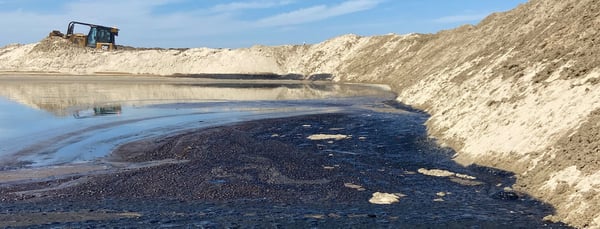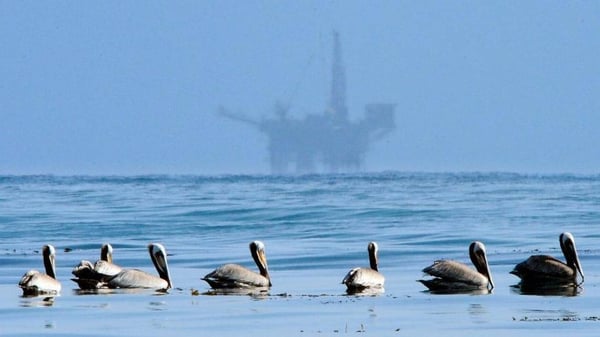
Florida’s First District Court of Appeal has issued a long awaited decision in an appeal concerning the public’s customary use rights to recreate at certain beaches in Walton County, Florida. Specifically, Walton County, Florida v. Alan R. Gibson et al., presented the question of whether a local government can abandon the public’s customary use rights. The customary use doctrine, recognized by the Florida Supreme Court in City of Daytona Beach v. Tona-Rama Inc., allows the public to continue to use the dry sand above the mean high water line for recreational uses, where such use is shown to be ancient, reasonable, without interruption, and free from dispute. In 2022, the Surfrider Foundation, on behalf of the Emerald Coast Chapter filed an amicus curiae (“friend of the court”) brief with the court, arguing that only the public can abandon their customary use rights – by actually stopping use of the beach – which has never occurred along Walton County’s shores.
The good news is that the doctrine of customary use continues to protect long-standing public uses of Florida’s beaches, and the procedures established by Florida Statutes § 163.035 remain the process for local governments to recognize and protect the public’s customary uses of their sandy beaches. Unfortunately, the First DCA’s March 27, 2024 per curiam decision (which was unanimous, and issued without an opinion) affirmed the circuit court’s decision that Walton County abandoned customary use for the Jasmine Dunes Subdivision in 1978. Surfrider respectfully disagrees with that conclusion, but, rightfully, the Court did not go further. The Court declined to strike down Fl. Stat. § 163.035 or the customary use doctrine, as opposing property owners had argued for in cross appeals.
Many questions linger regarding public beach access in Walton County. In June of last year, Walton County settled its underlying customary use lawsuit, brought pursuant to Fl. Stat. § 163.035, with many beachfront property owners, in exchange for limited public rights to a portion of the dry sand beach. As described in more detail in this June 2023 Surfrider Coastal Blog post, the public rights articulated by the County’s agreement are quite restrictive. In short, the settlement allows the public to use the 20 feet landward of the “wet/dry sand line” (the “transitory zone”) on the owners’ parcels for the following limited purposes:
(1) transitory purposes like walking and running;(2) accessing the wet sand and ocean for swimming, surfing, surf fishing, and skim boarding; and
(3) stationary uses like sitting, or lying on the sand, towel or privately owned beach chair (not from a vendor), between the limited hours of 9 am and 4 pm.
Due to the parcel-by-parcel nature of the lawsuit and settlement, it may be difficult for beachgoers to know precisely where they have these rights to the dry sand. However, Walton County offers a new interactive online map showing, among other beach access areas, the publicly accessible beach parcels that have settled: https://www.visitsouthwalton.com/beach-bay-access-locations/.
A new concern has also emerged. At least one or two settling property owners have filed a motion with the court requesting to approve their withdrawal from the settlement agreement. However, pursuant to the Partial Final Judgment of the court implementing the parties’ agreement, all settling property owners have already been dismissed from the lawsuit with prejudice (meaning another § 163.035 customary use case cannot be filed again on their property). This final judgment states that there are no customary use rights on the settling intervenors’ beach parcels and that the issue of customary use is moot on their parcels. Reportedly, the Walton County Commission has approved the request for withdrawal, although as of this date, the court has not issued any response to the parties’ November 30, 2023 motion.
If settling property owners are permitted to withdraw and are no longer required to hold up their end of the bargain by allowing public access in the transitory zones, they have no right to receive the benefits of the agreement, such as County enforcement or indemnification for damage of their property by public use. It is less clear whether parties who withdraw continue to receive the benefits of a dismissal with prejudice, which are part of the Partial Final Judgment, declaring there are no customary use rights on their parcel and that the issue is forever moot, an outcome that would be exceptionally unjust. A myriad of other issues concerning the settlement agreement will arise because of poor drafting and the potential for conflict with state law.
In the meantime, related litigation continues. Some notices of appeal have been filed by beachfront owners who did not intervene in the § 163.035 case and were not part of the settlement agreement. In February, the circuit court granted summary judgment in favor of the County with respect to eight such beach areas. The court agreed that the County plainly established that public use at these beaches has been ancient, reasonable, without interruption, and free from dispute. While the case was a success for the continued viability of the customary use doctrine, it is dismaying that the County only sought to enforce the limited set of public recreational access rights established in the settlement agreement on these eight beach areas. Some owners have appealed that decision. Surfrider continues to monitor these appeals, and will continue to defend Florida’s customary use doctrine and the public’s beach access rights in the state. Recreational use of Florida’s dry sandy beaches has been engrained as a significant part of Florida culture and must not be diminished.


